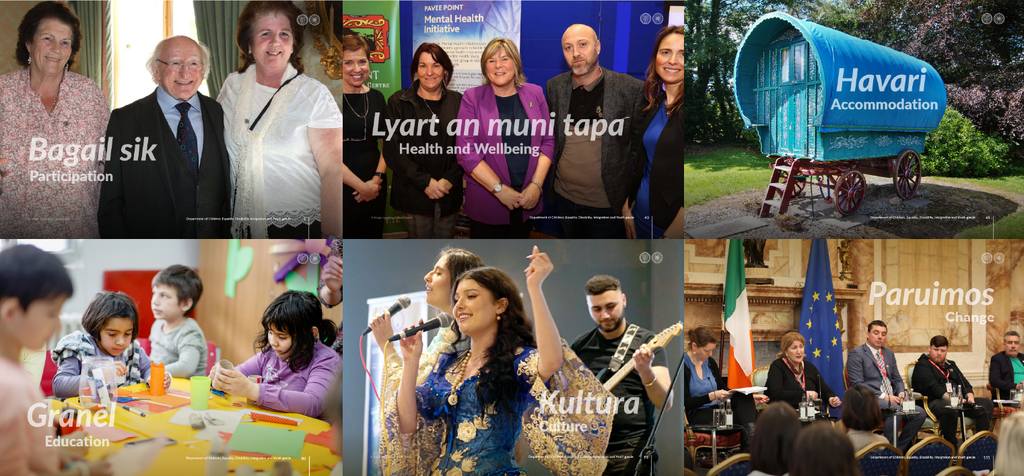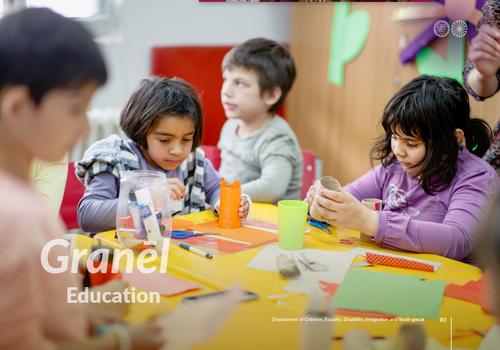
On July 31st, 2024 the Government published National Traveller and Roma Inclusion Strategy II 2024-2028 (NTRIS II). In the report it notes that “This is Ireland’s third National Strategy for Travellers and Roma. It has been developed with particular reference to the Public Sector Equality and Human Rights Duty, under Section 42 of the Irish Human Rights and Equality Commission Act 2014, and the Government’s policy on the Values and Principles for Collaboration and Partnership Working with the Community and Voluntary Sector.” (p10)
Amongst the issues highlighted in the report are that “Travellers have high unemployment rates (61% in Census 2022).” According to the Census Data Ireland’s unemployment rate was 8%, and the long-term unemployment rate was 4%. The long-term unemployment rate for Travellers was 39%. “The key labour market barriers facing Travellers are: discrimination, both in hiring processes and within the workplace; low levels of education and literacy; and a lack of access to tailored public programmes and supports.” (p12) The report, Roma in Ireland: Access to Fair and Decent Work (2023), "indicates that the issues faced by Roma in accessing and succeeding in employment are multifaceted and interconnected, and as a result employment interventions must also be multidimensional." (p43)
NTRIS II contains nine themes which are closely aligned with those in the EU Roma Strategic Framework on Equality, Inclusion and Participation 2020-30 . There are seven key areas of focus under the EU Strategic Framework including inequality; inclusion; participation; education; employment; health; and housing. Under NTRIS II the nine themes are: combatting racism and discrimination; children and young people; gender equality; health and wellbeing; employment and enterprise; accommodation; education; culture, heritage and identity; participation, empowerment, cooperation and accountability.
Under the first theme, to combat racism and discrimination, the strategic outcome is that “The right of Travellers and Roma in Ireland to live their lives free of racism and discrimination is realised. A positive culture of respect for, and protection of, the cultural identity of Travellers and Roma is fostered and facilitated in the delivery of all public services.” (p16)
Theme 5 covers employment and enterprise and the six strategic objectives under this theme include:
- Adopt a strategic approach to addressing Traveller and Roma unemployment in the context of prevailing strong labour market conditions.
- Increase the number of Travellers and Roma in employment in the public sector.
- Increase the number of Travellers and Roma in employment in the private sector.
- Support self-employment, entrepreneurship and social enterprise opportunities.
- Address barriers to accessing the labour market and entrepreneurship opportunities, with specific reference to financial exclusion.
- Build a positive and inclusive workplace culture.
 The strategic outcome under theme five seeks to ensure that “Travellers and Roma have equal access to quality and sustainable employment. Entrepreneurship and self-employment opportunities for Travellers and Roma are supported. There is a positive and inclusive workplace culture where diversity is valued and every individual is treated with respect and dignity.” (p18)
The strategic outcome under theme five seeks to ensure that “Travellers and Roma have equal access to quality and sustainable employment. Entrepreneurship and self-employment opportunities for Travellers and Roma are supported. There is a positive and inclusive workplace culture where diversity is valued and every individual is treated with respect and dignity.” (p18)
Theme 9 covers the issues of participation, empowerment, cooperation and accountability. The strategic outcome under this theme seeks to “Promote participation by Travellers and Roma within electoral processes and through local community, regional and national structures. Strengthen the ability of both communities to influence the development of policy and the delivery of local services and to monitor the progress and impact of initiatives that address the issues that are relevant to them, including under this Strategy.” (p20)
Addressing intersectionality is the issue discussed on page sixty of NTRIS II. Intersectionality is described as “an analytical tool that is used for the purpose of equality and human rights monitoring to show the distinct forms of harm, abuse, discrimination and disadvantage experienced by people when multiple categories of social identity interact with each other.” In other words, it is a way of acknowledging that Travellers and Roma are not homogenous, and that within these communities members can have very different experiences because of, for example, their gender, age, sexual orientation, and / or family status.